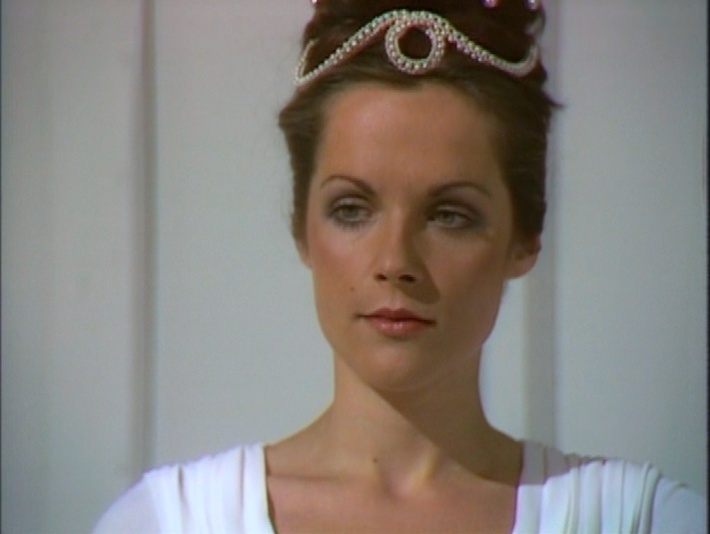How do you kill a stone?
While the prior two stories in Season Sixteen’s Key to Time arc utilize the segments of the Key in minor plot roles, as befits a MacGuffin, newcomer David Fisher’s contribution, “The Stones of Blood” (Story Production Code 5C) integrates the segments’ transmutation ability into the proceedings more directly. Disguised as the Great Seal of Diplos, a planet in the Tau Ceti system, the third segment hangs as a pendant from the neck of Vivien Fay (Susan Engel), who also happens to be known as the Cailleach, a Celtic goddess of war, death, and magic, and as the wanted criminal Cessair of Diplos. Her welter of identities dovetails nicely with the story’s wild tonal shifts, from gothic gloom to shocking horror and from broad farce to courtroom drama. Just when viewers think they have “The Stones of Blood” figured out, Fisher and director Darrol Blake change gears, not always smoothly, resulting in one of those herky-jerky stories only Doctor Who could (more-or-less) pull off.

Events begin on contemporary Earth, in England as ever. The tracker leads the Fourth Doctor and Romana to Boscombe Moor, site of an ancient stone circle whose megaliths have a disconcerting habit of moving on their own. But once they arrive, the tracker no longer registers the segment’s presence. Shortly thereafter, one of the leading scholars of the location, Professor Rumford (Beatrix Lehmann) arrives to conduct a survey with the help of her assistant, Vivien Fay. Oddly, the tracker registers once more when Rumford and Fay are nearby. After the Doctor points out evidence of a recent blood sacrifice in the circle, the Professor tells him about BIDS—the British Institute for Druidic Studies—a group that conducts pseudo-Druidic ceremonies at the site. The Doctor goes to their nearby headquarters in an old convent to investigate, while Romana stays behind to keep an eye on Rumford and Fay.

Between scenes of the cultists pouring blood on the stones in the circle and the creepy manor house with dust covered walls, to say nothing of the excessively dismal location shooting, Fisher and Blake employ the visual language of horror films throughout this four part story. Far more than earlier cult-laden, terror-tinged stories, like “The Daemons” and “Image of the Fendahl,” “The Stones of Blood” leans heavily into the threat of imminent violence. Blood, bones, and skeletons abound, as though Mary Whitehouse’s crusade were but a distant memory.

When the leader of BIDS, DeVries (Nicholas McArdle) knocks out the Doctor and prepares to sacrifice him to the stones, the long curved blade glints menacingly near the Doctor’s throat, a visceral level of danger seldom seen of late. The overall effect would be spellbinding, were the Doctor not saved by the fortuitous approach of the Professor, walking her bicycle nearby, scaring away the cultists out of all proportion to her relative strength. Indeed, the only things less frightening in the story than the septuagenarian archeologist and her bicycle are the blood-fed stones themselves, as they waddle after any victims incapable of moving faster than a snail…



















